Cole Cooks: Prime Rib Roast
Our traditional Christmas family dinner is a prime rib roast. Over the years I have experimented with multiple ways to cook prime rib. For Christmas 2019 I decided to cook the prime rib two ways: sous vide and a traditional oven method.
When estimating how big a roast you need the general rule of thumb is one pound of bone-in prime rib per person. In my experience, that has always been enough to feed everyone and have leftovers. In 2019 we had 17 people coming for Christmas, so we bought a 16-pound roast.
A 16-pound roast is massive and would barely fit in our oven. That gave me the idea to split the roast in half and try two different methods for cooking. One half I did my traditional reverse sear oven method. The other I did sous vide.
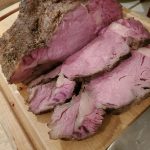

A prime rib is simple to cook but there are a couple techniques I use. I am a big fan of Meathead and his Amazing Ribs website. I follow Meathead’s advice and remove the bones from the meat. I set the bones aside to make broth the next day.
Removing the bones is fairly simple. You just need a sharp knife. The bones make a great beef stock. This allows you to bring out the flavor. Once again Amazing Ribs has a convincing argument why leaving the bones-in does NOT enhance prime rib.
See how I used the bones to make a Instant Pot Beef Broth.

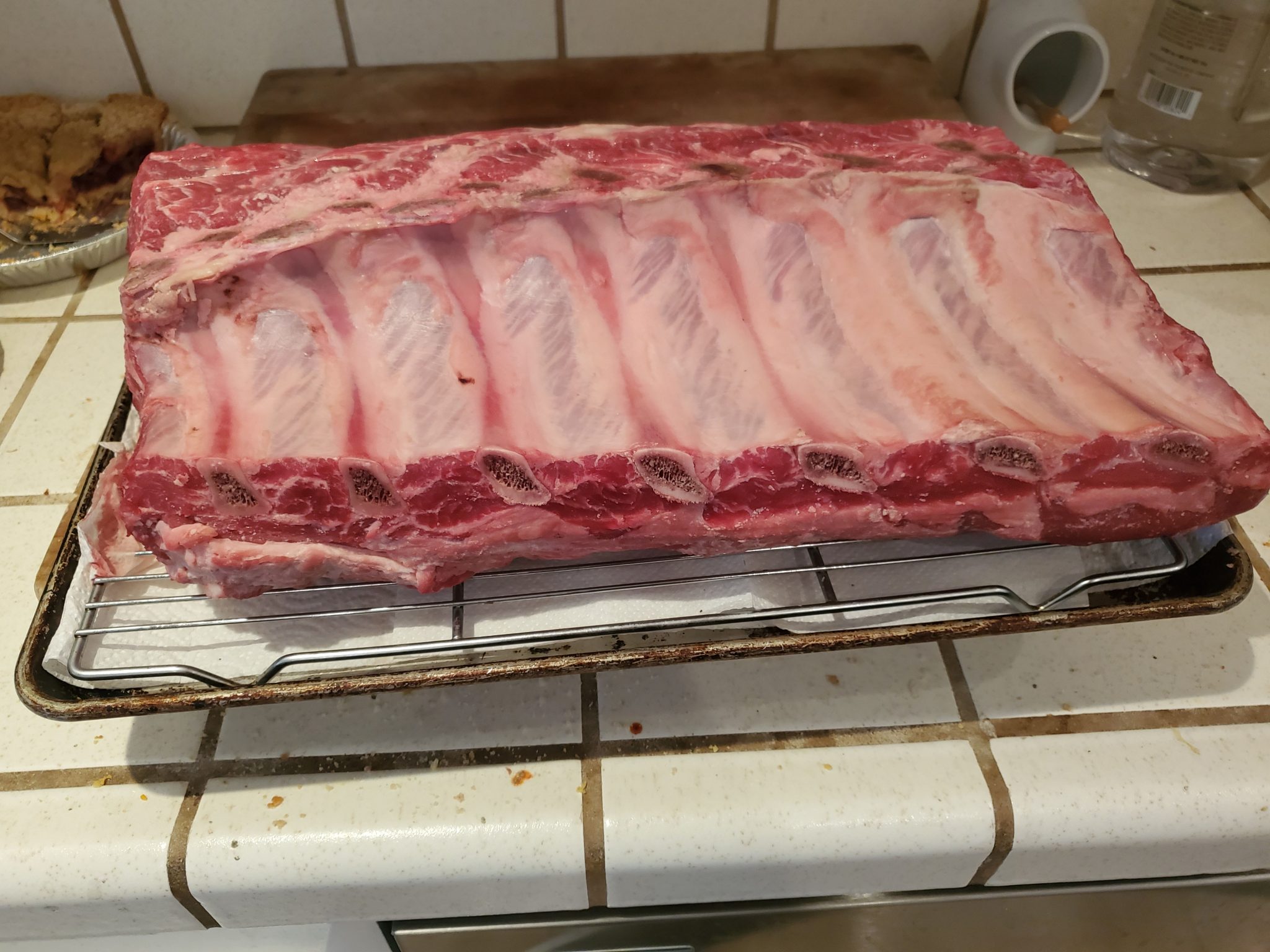
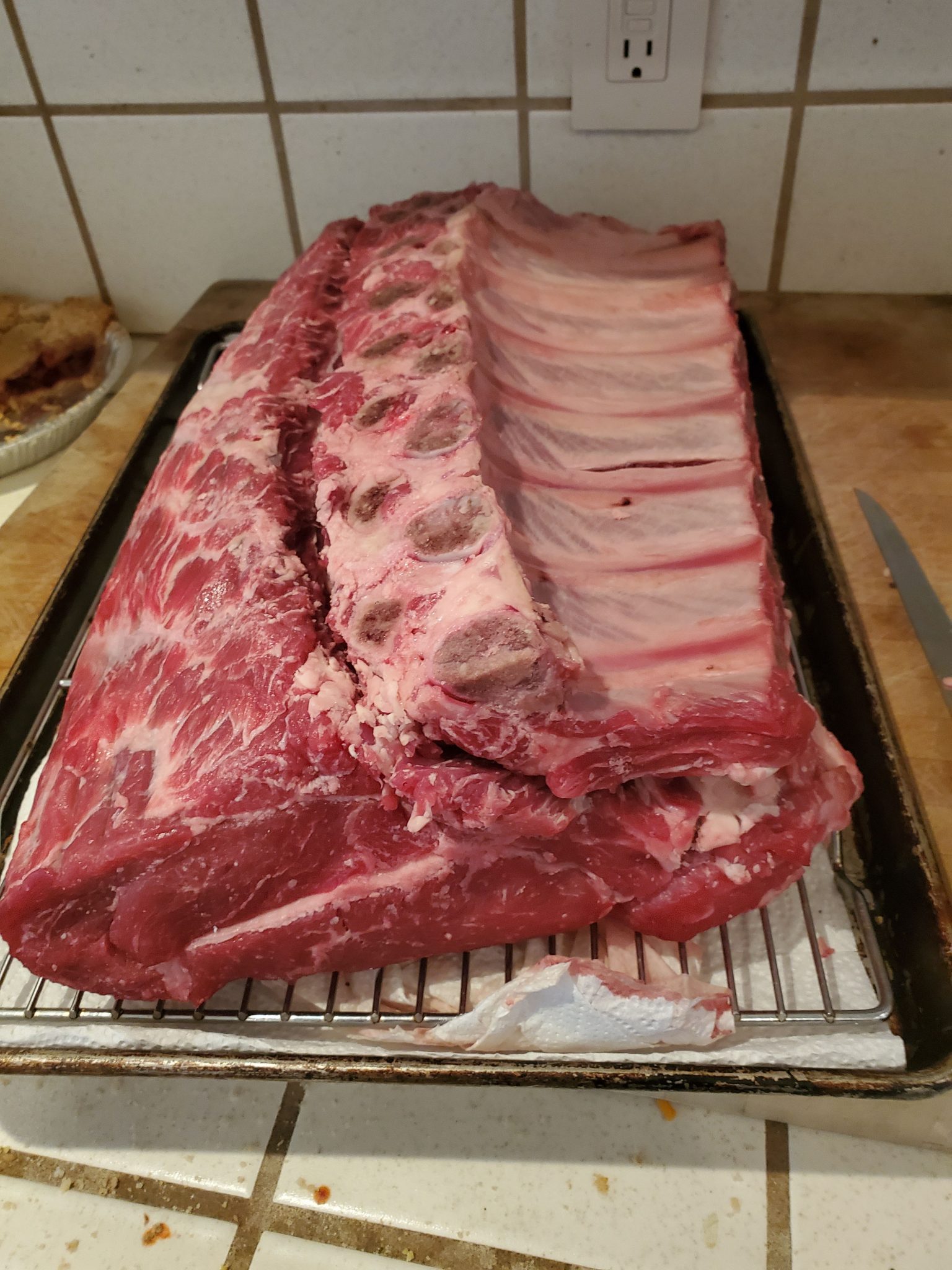

The other Amazing Ribs advice I follow is to tie the roast in a cylinder shape to promote even cooking. However, this was only for the roast I cooked in the oven. Sous vide automatically cooks the roast evenly so there was no need to tie the roast.
Usually we buy a choice cut of roast. However, our local butcher had a great deal on select prime rib at $4 a pound. This compared with $10 a pound for choice. Our butcher recommended the select. According to him, the main difference is less marbled fat with select. This is not an issue with prime rib which is usually quite fatty. We ended up saving almost a $100 and both roasts turned out excellent.
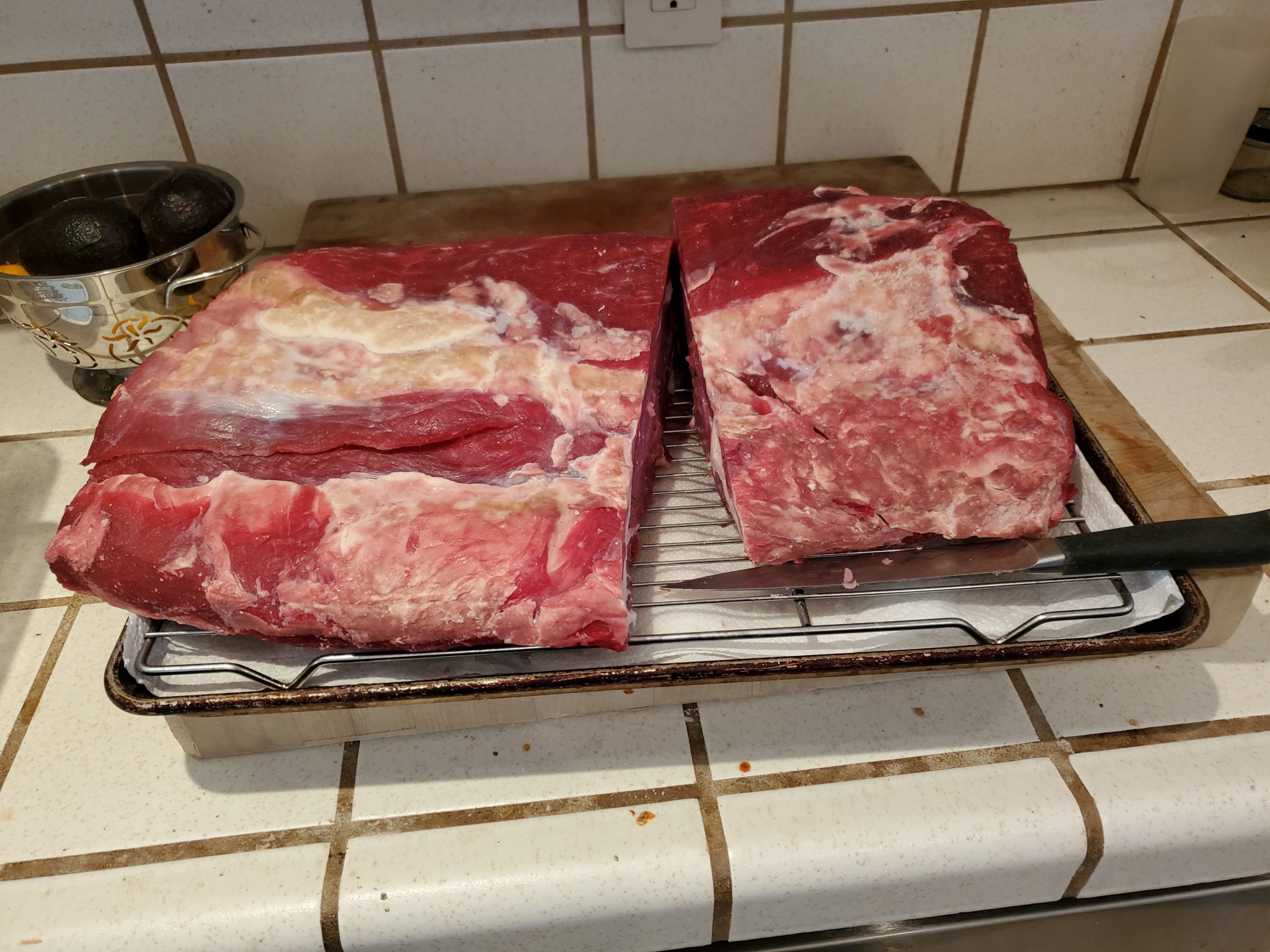
I did a dry salt brine of the roast the day before cooking. Once again this was recommended by Meathead. However, from here I parted ways with Amazing Ribs and ventured on my own.
For my oven roast I used a reverse sear technique. This is where you cook the roast at a low temperature (225 degrees) until it reaches the desired temperature. 125 degrees for rare, 130 degrees for medium rare, and 135 for medium.
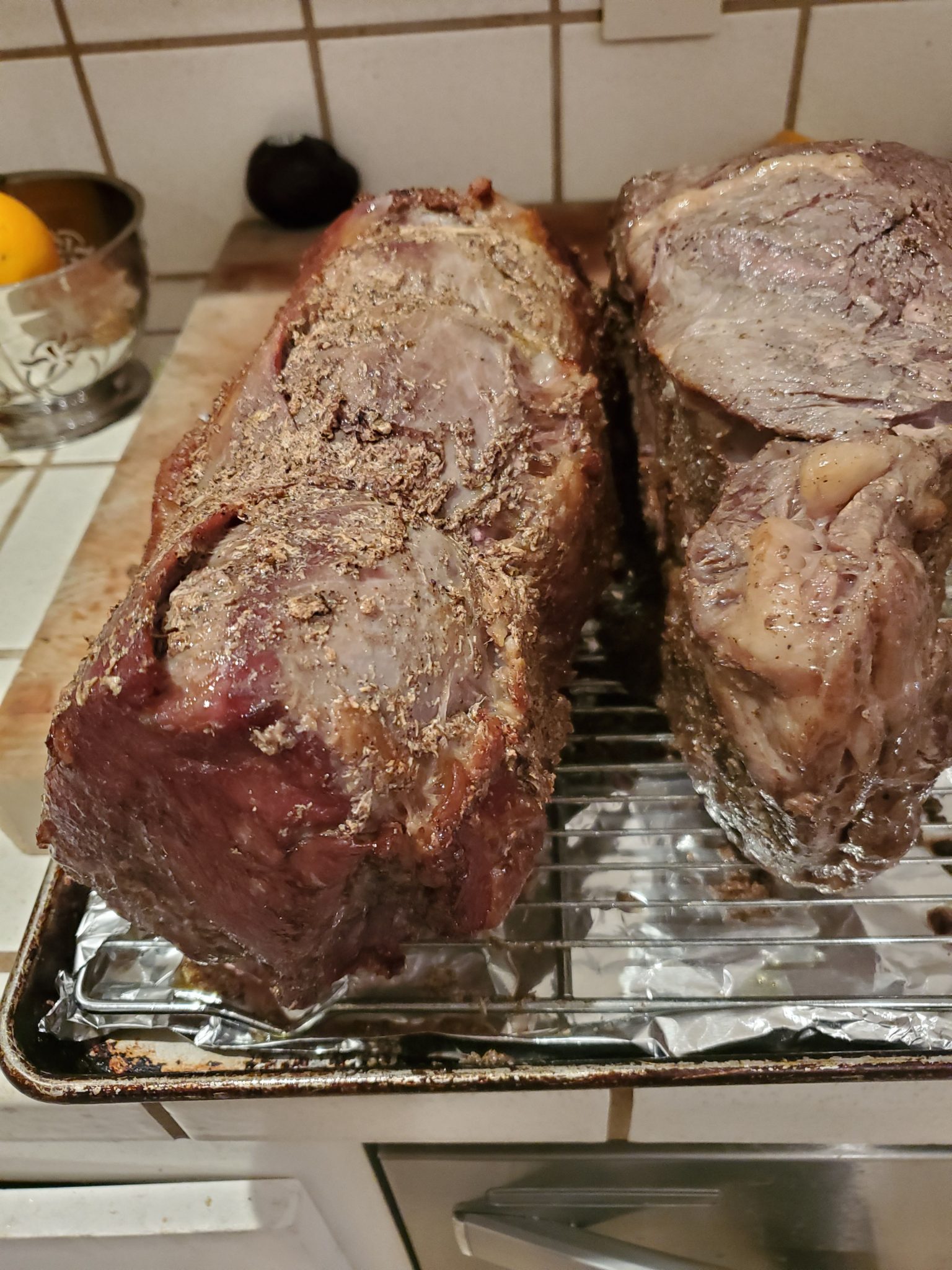
I went for 130 degrees and started cooking 6 hours before dinner was to be served. The downside of this oven method is the prime rib reached 130 degrees after only 3 hours. I ended up having to put it in the refrigerator.
Sous vide has a big advantage with cooking time. You heat the sous vide bath to the exact temperature you want the meat and let it go. I let the roast sit in the bath for 8 hours. I could have done 6 or 10 and it would not have made a difference.
The downside with sous vide is that it can be hard to find a container big enough to fit a roast. I have bought these special reusable silicon sous vide bags in several sizes. A 2-gallon size is enough to hold about 6 pounds of roast (once the bones are removed).
With both roasts the final step is to sear the meat for 10 minutes at the hottest temperature your oven can reach (550 degrees in our case). This is done right before serving.
Amazingly both methods tasted delicious. Sous vide is definitely easier. However, you are limited by the size of your container. We use a 12-quart container and a 2-gallon bag and that barely will fit 6 pounds of prime rib.
I have experimented with multiple methods for cooking prime rib over the years. With cooking in the oven, you definitely need to worry about over cooking the meat. This is not a problem with sous vide.
However, the beauty of using the low temperature reverse sear method is that it cooks at a slower pace. Using the traditional 350-degree oven method I have definitely overcooked a few prime rib roast in my day.
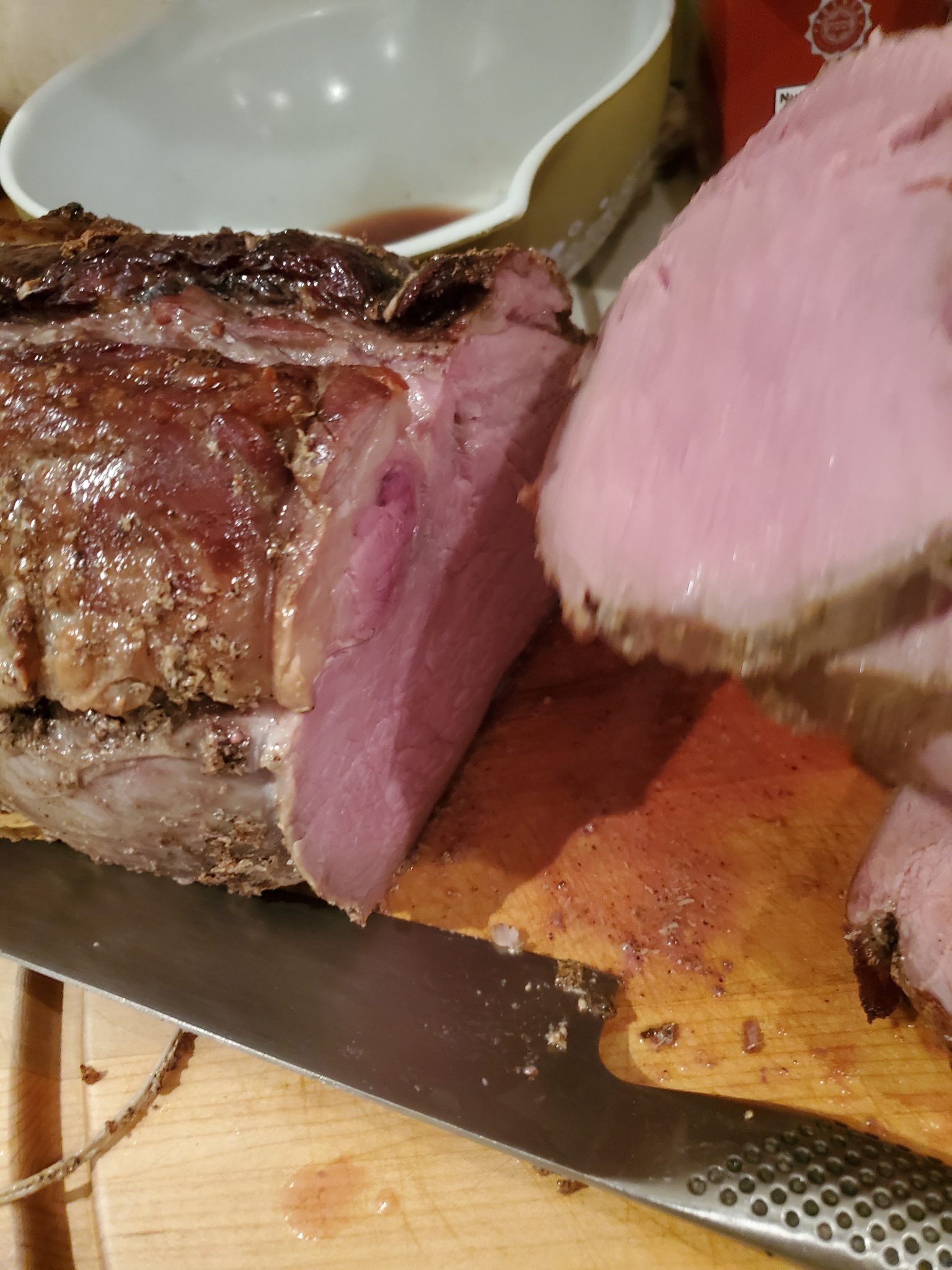
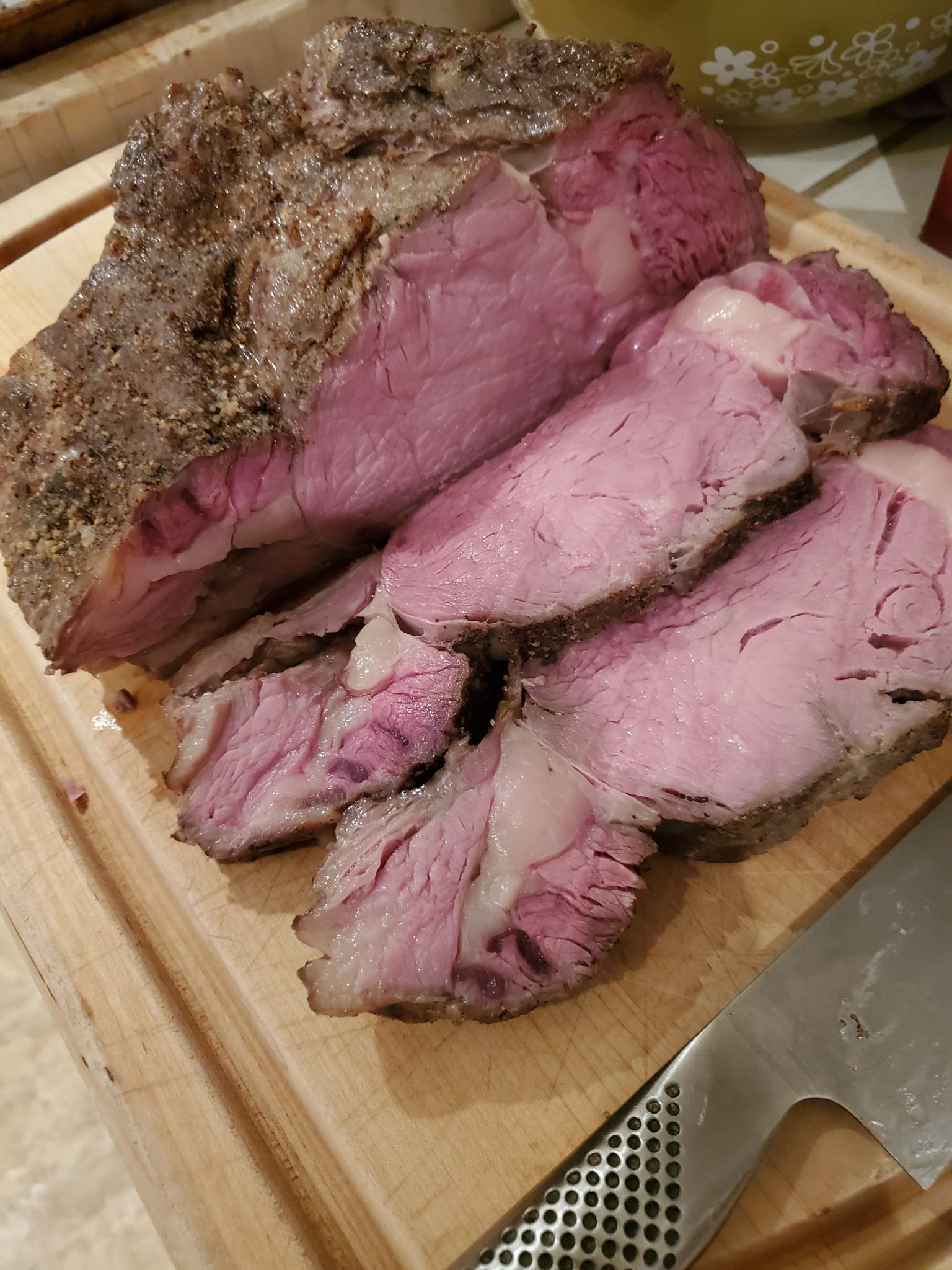
Be sure and check out both of our recipes!





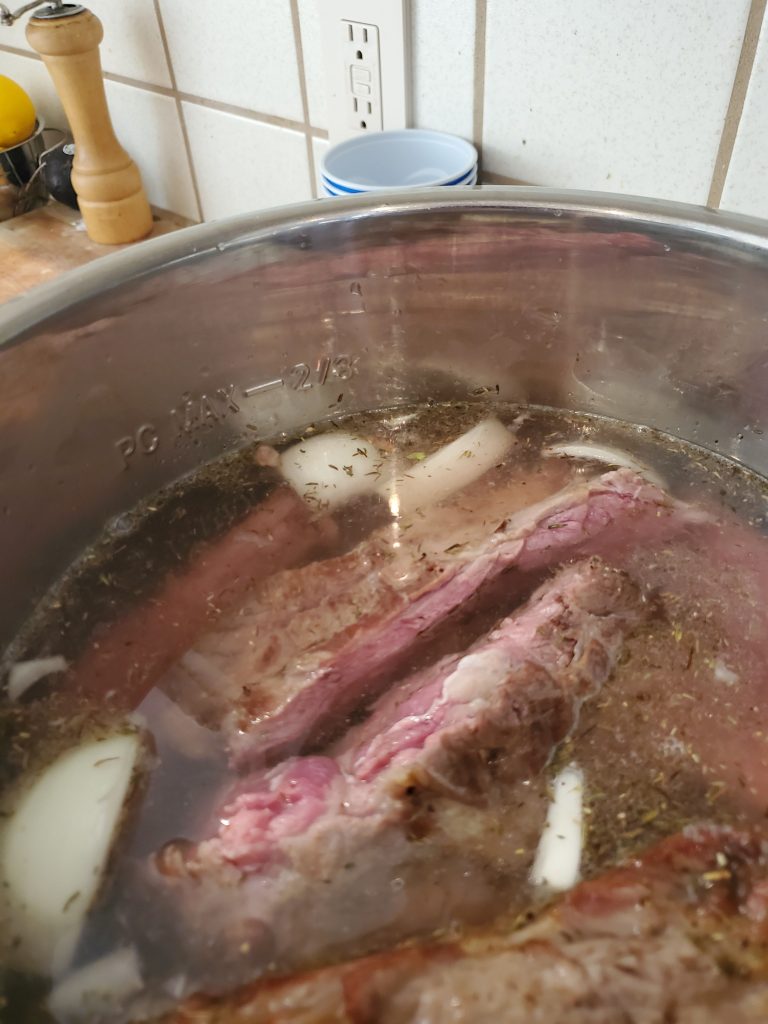


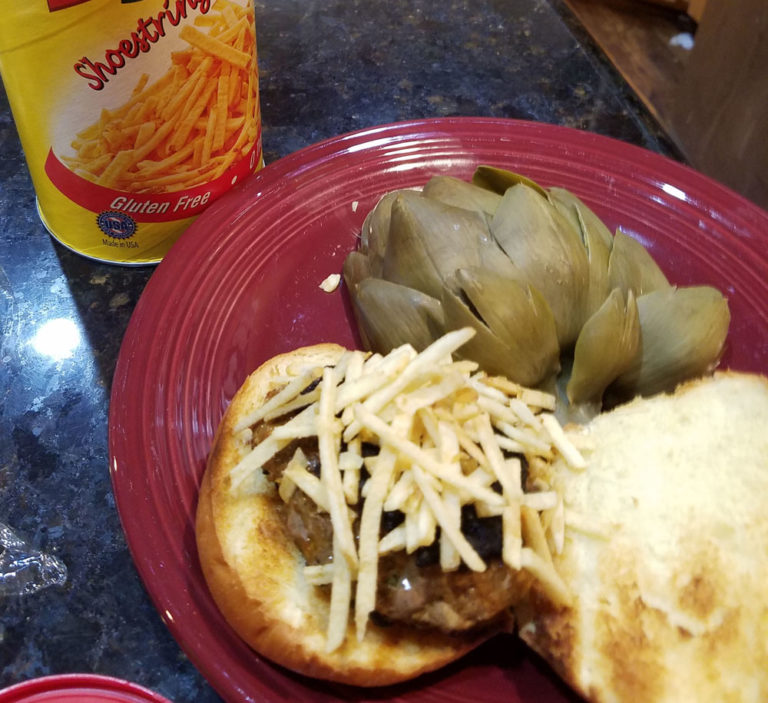
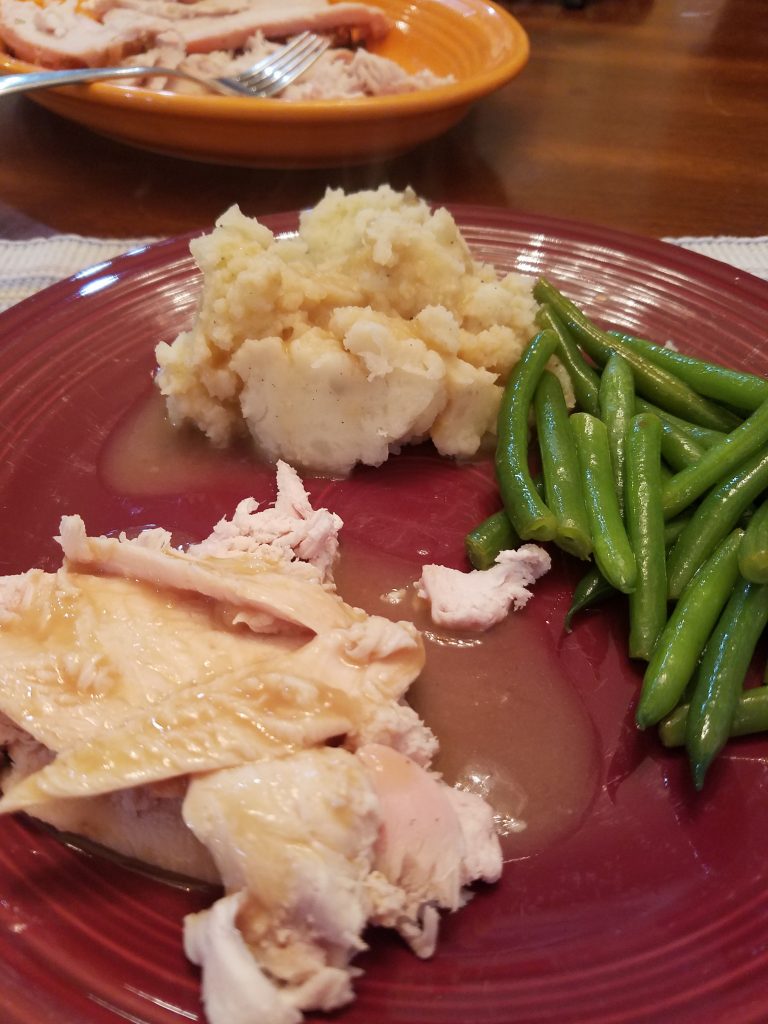
3 Comments
Comments are closed.